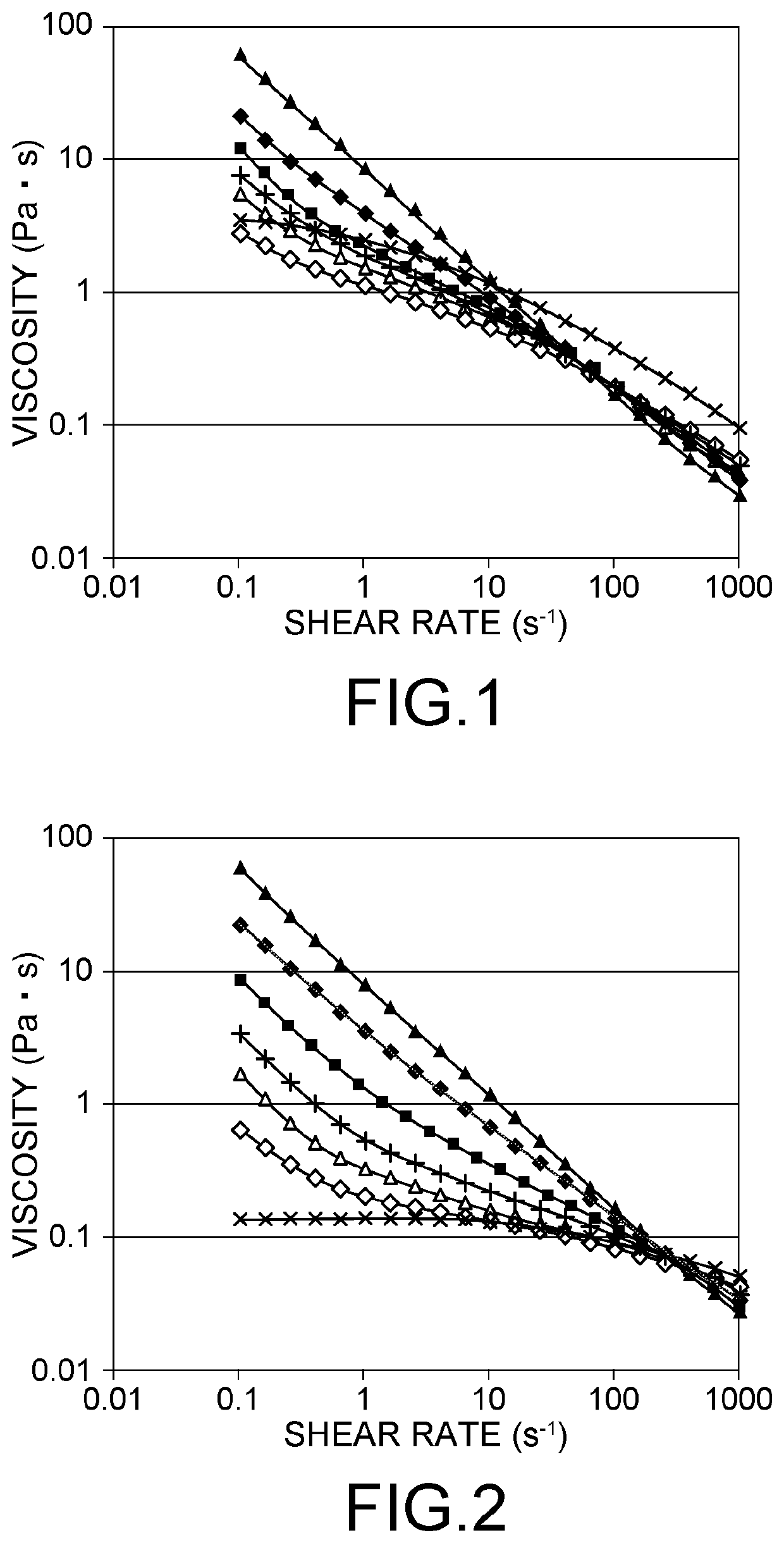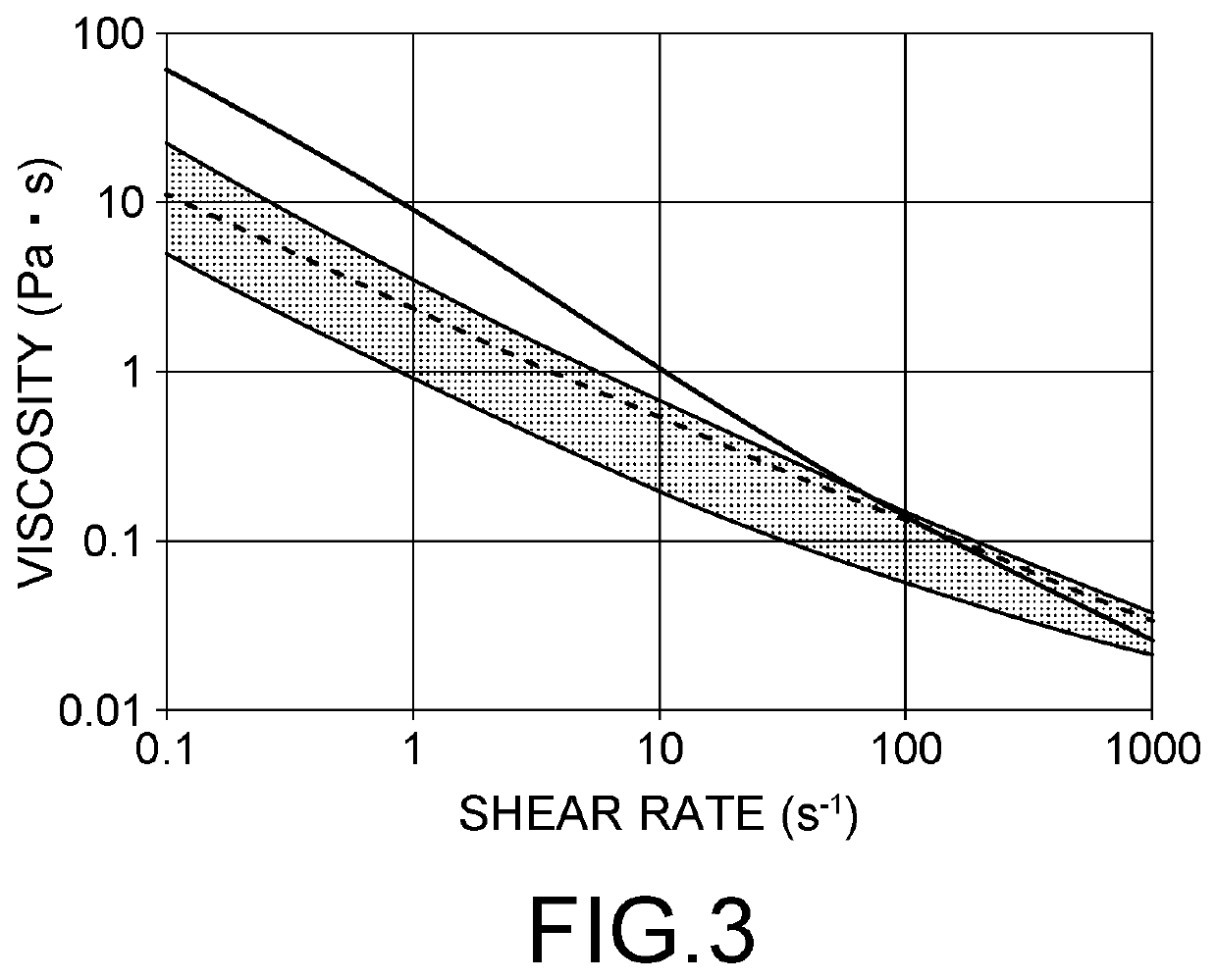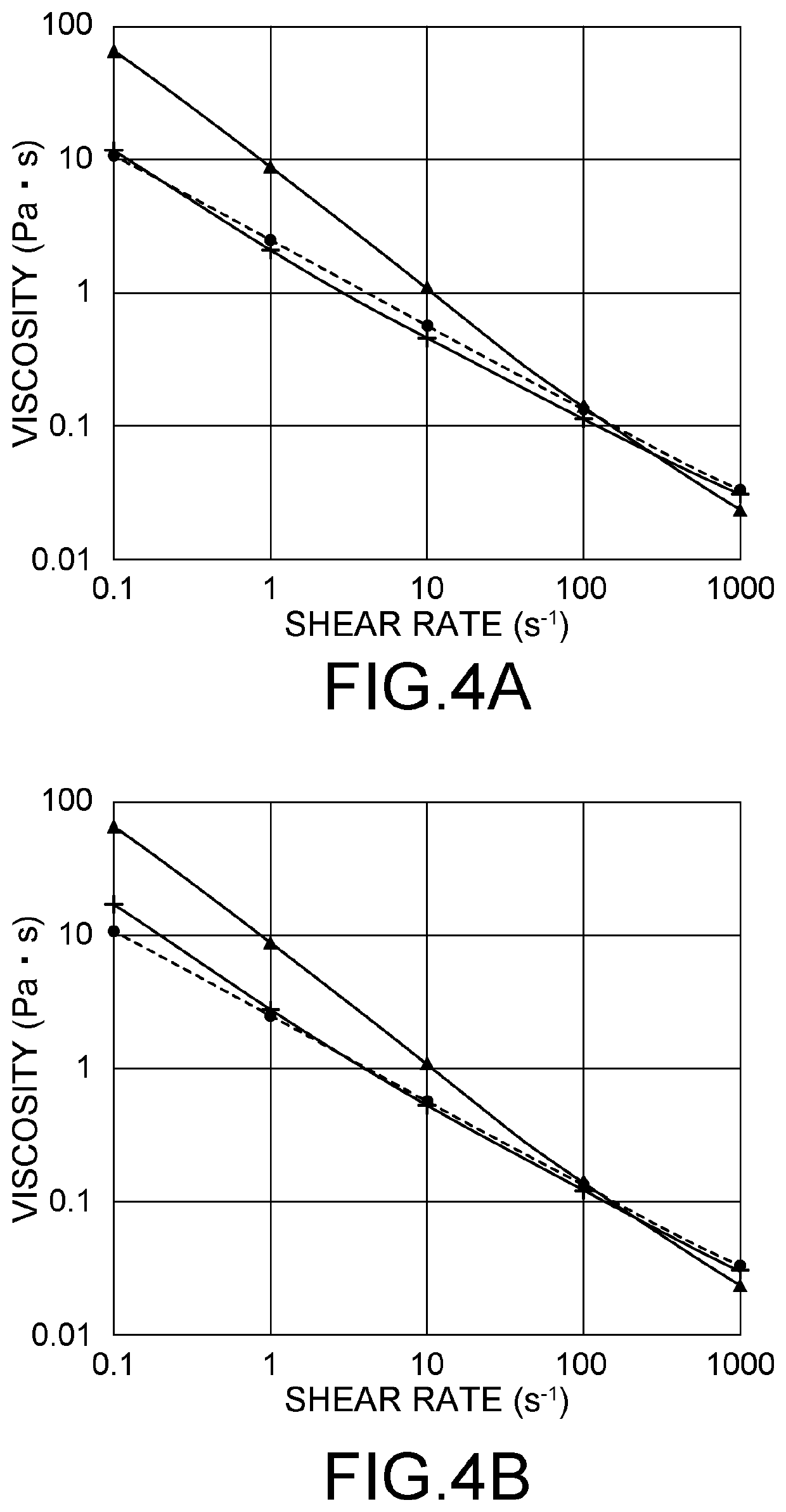Thickening composition
- Summary
- Abstract
- Description
- Claims
- Application Information
AI Technical Summary
Benefits of technology
Problems solved by technology
Method used
Image
Examples
example 1
g Composition Comprising Xanthan Gum and Cellulose Gum
(1) Measurement of Fluid Characteristics (Flow Curve)
[0075]Each thickening composition was prepared in accordance with the blends as described in the following Table 1. As for xanthan gum were used, GRINDSTED Xanthan clear 80 (Du Pont) and GRINDSTED Xanthan MAS-SH clear (Du Pont). As for cellulose gum (carboxymethyl cellulose) were used, GRINDSTED BEV130 (Du Pont) (Low viscosity: 2%, from 800 to 1600 mPa·s), GRINDSTED BEV150 (Du Pont) (Medium viscosity: 1 %, from 1500 to 3500 mPa·s), and GRINDSTED BEV350 (Du Pont) (High viscosity: 1%, from 3000 to 5000 mPa·s).
TABLE 1Blending Component of Each Thickening Composition of Example 1Xanthan gumCellulose gumXanthan XanthanBEVBEVBEVBlend No.clear 80MAS-SH clear130150350BEV150100BEV1301000-801002505034060470305604085050116040127030134060153070193070116307011730701183070119303535120406012140601224060123403030124505012550501265050127502525128604012960401306040131602020Note)Values of the com...
example 2
g Composition Comprising Xanthan Gum and Alginic Acid
[0084]Thickening compositions were prepared as shown in the following Table 3 based on the above-described method of Example 1 (1) except that an experimental section was added where alginic acid was used instead of cellulose gum. As for alginic acid, GRINDSTED alginic acid (Du Pont) was used.
TABLE 3Blending Component of Each Thickening Composition of Example 2Xanthan clear BEVBlend name80alginic acid130alginic acid100BEV1301000-80100XG / BEV1304060XG / Alginate4060
[0085]With respect to each thickening composition, the ingredient (xanthan gum and / or alginic acid) was dissolved in deionized water so that the mass of said ingredient will be 1% by mass based on the total mass of the total solution. Fluid characteristics (relation between the shear rate and the viscosity) of the obtained aqueous solutions was measured in accordance with the above-described method of Example 1 (1), using a viscoelasticity measuring instrument: MCR501 Rheom...
example 3
g Composition Comprising Succinoglycan and Cellulose Gum
[0088]Thickening compositions were prepared as shown in the following Table 4 based on the above-described method of Example 1 (1) except that an experimental section was added where succinoglycan gum was used instead of xanthan gum. As for succinoglycan gum, GRINDSTED succinoglycanJ (Du Pont) was used.
TABLE 4Blending Component of Each Thickening Composition of Example 3Blend namesuccinoglycanBEV130BEV130100succinoglycan100344060366040373070
[0089]With respect to each thickening composition, the ingredient (succinoglycan and / or cellulose gum) was dissolved in deionized water so that the mass of said ingredient will be 1% by mass based on the total mass of the total solution. Fluid characteristics (relation between the shear rate and the viscosity) of the obtained aqueous solutions was measured in accordance with the above-described method of Example 1 (1), using a viscoelasticity measuring instrument: MCR501 Rheometer (Anton Par...
PUM
 Login to View More
Login to View More Abstract
Description
Claims
Application Information
 Login to View More
Login to View More - R&D
- Intellectual Property
- Life Sciences
- Materials
- Tech Scout
- Unparalleled Data Quality
- Higher Quality Content
- 60% Fewer Hallucinations
Browse by: Latest US Patents, China's latest patents, Technical Efficacy Thesaurus, Application Domain, Technology Topic, Popular Technical Reports.
© 2025 PatSnap. All rights reserved.Legal|Privacy policy|Modern Slavery Act Transparency Statement|Sitemap|About US| Contact US: help@patsnap.com



